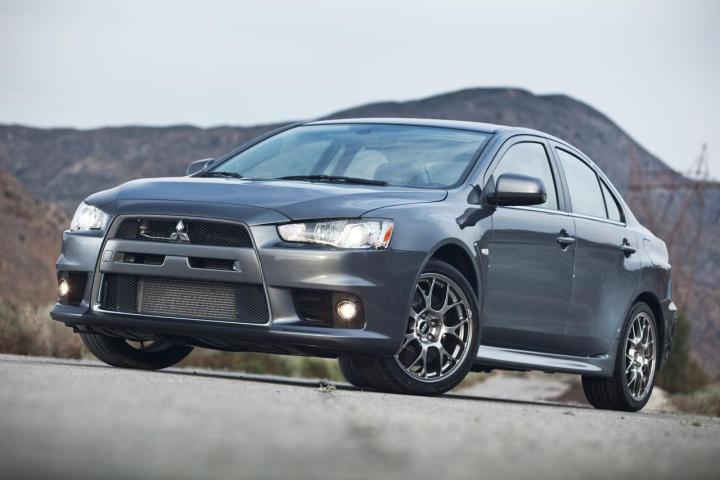
The Mitsubishi Lancer Evolution has gone so long without a significant update, you’d be forgiven for thinking that it’s dead.
However, Mitsubishi reportedly has bigs plans for its sportiest model.
The turbocharged rally-car-for-the-road known as the “Evo” may ditch the Lancer platform altogether, and gain a hybrid powertrain, according to Motor Trend.
The next Lancer compact sedan will switch to a Renault platform, but a Mitsubishi insider told the magazine that said platform won’t be adequate for the performance targets the company has set for the next Evo.
That car, the 11th Evo, will also reportedly be a technological showcase, somewhat similar in mission to the Nissan GT-R. Specifically, it will be showcasing Mitsubishi’s plug-in hybrid powertrain technology.
Mitsubishi has tried to carve out a niche as a proliferator of plug-ins. The company launched the Outlander PHEV earlier this year, and showed two plug-in hybrid crossover concepts at the 2013 Tokyo Motor Show.
The next Evo may be powered by a version of the 1.1-liter turbocharged three-cylinder engine from one of those concepts, the XR-PHEV. Electric motors latched to each axle will give it all-wheel drive, and a downsized battery pack will sit under the rear seats.
Those electric motors could reportedly cooperate withe Mitsubishi’s Super All-Wheel Control vehicle dynamics system to dramatically improve the car’s handling.
A high-performance plug-in hybrid sounds pretty remarkable, but it would take the Evo very far from its original concept. When it was launched in 1993, the Evo was a “homologation special”, a way for Mitsubishi to get into the World Rally Championship (WRC). The series requires manufacturers to sell a certain number of the cars they plan to race.
Mitsubishi hasn’t competed in the WRC for years, but the connection is still pretty strong. The company would have to change the car’s name, because it wouldn’t really be an “Evolution” of an existing model anymore.
There’s something to be said for practical performance cars based on ordinary models, but Mitsubishi wouldn’t be the first Japanese carmaker to switch things up in the name of ultimate performance.
The Nissan GT-R started out as a high-performance version of the Japanese-market Skyline, until Nissan moved to a dedicated platform with the current R35 generation.
For awhile, it looked like Subaru would build a new WRX on a bespoke platform as well, but the recently-revealed 2015 model is still based on the Impreza compact.


